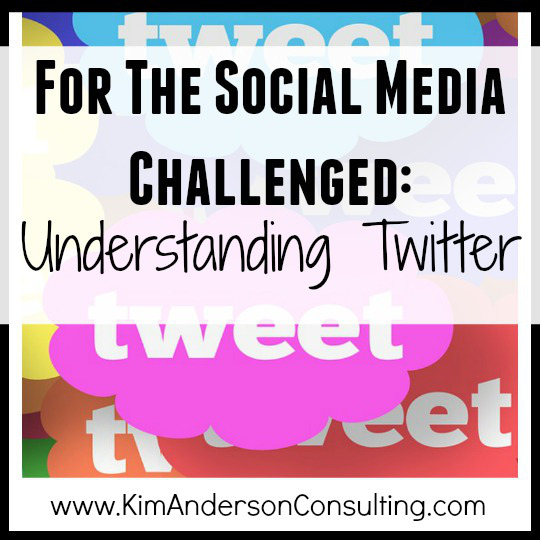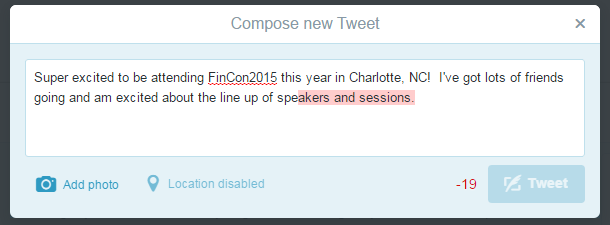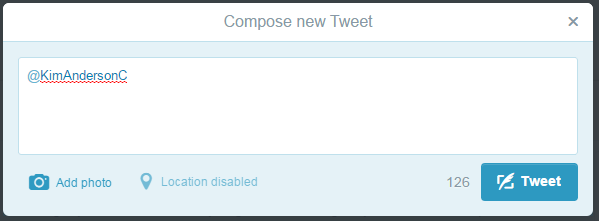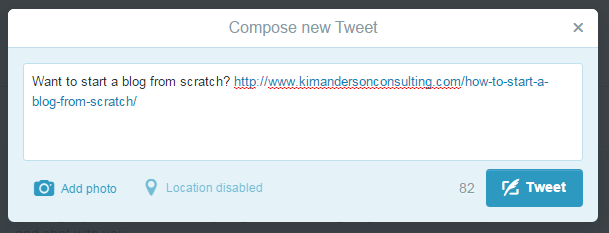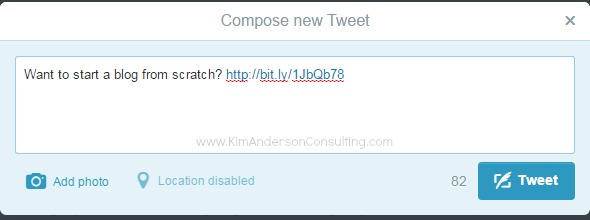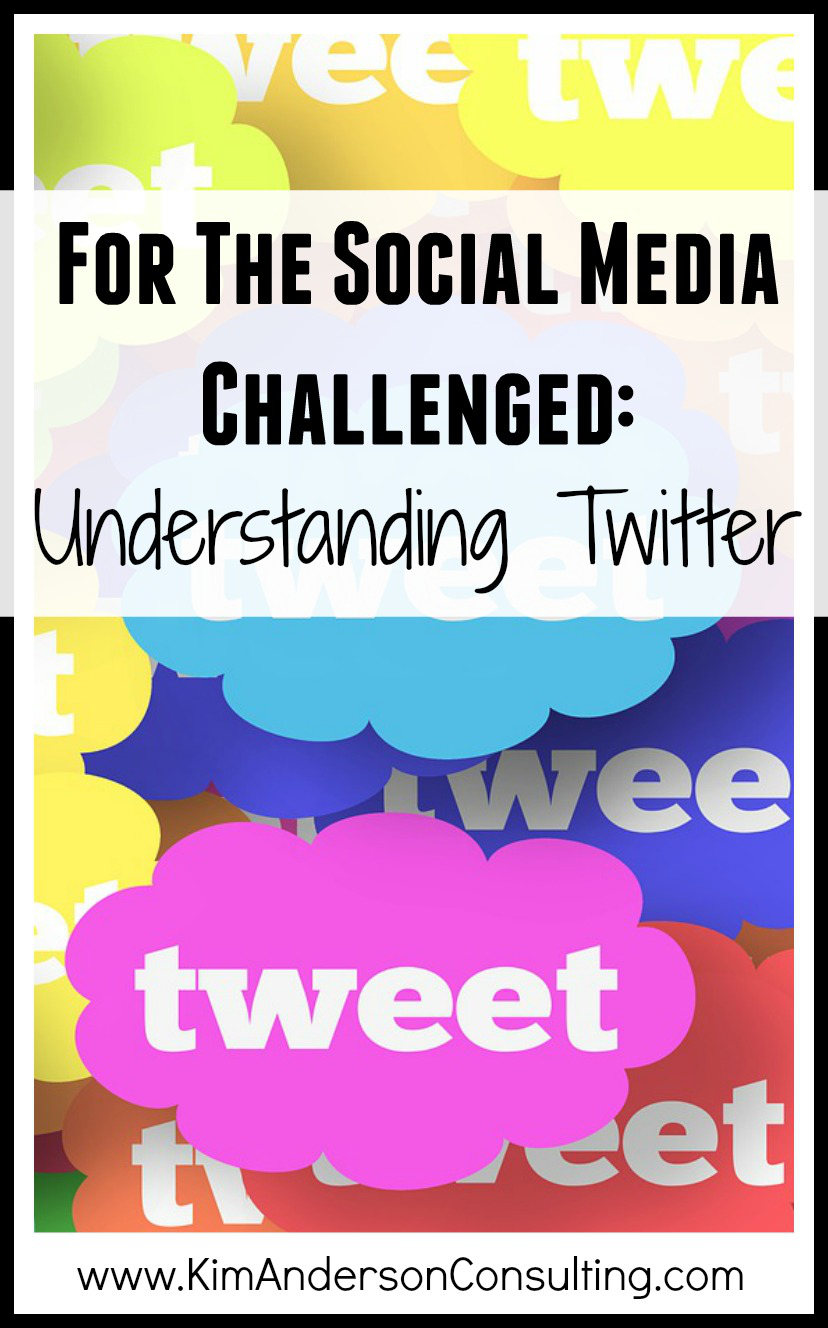Ahh Twitter. For the long winded writers of the world it’s a curse. For the short and to the point kind of folks it’s a blessing. If you struggle with the idea of keeping things short and to the point it can take you 20 minutes just get a Tweet out because you are trying to figure out how to shorten all ur words 2 fit n 140 characters (hand raised).
Then there is the group out there who have no idea what the point of Twitter is and avoid it like a plague. Still others have an account but aren’t sure what to do with it. How do you decide if it’s the right social media avenue for you and how do you use it effectively? Let’s start with the basics of using and understanding Twitter and then move on to whether or not it’s right for your platform.
How to Compose Tweets-
Please note that the screen shots seen below are from my Twitter accounts “Compose new Tweet” box and are Tweet examples intended to serve as educational purposes only.
Keep It Short & Sweet- Twitter only allows you 140 characters to get your idea out. Sometimes that may require that you use abbreviations for common words in the English language to say more with less. If you want to get familiar with those you should see this article by Tya Fisher title, Top Social Media Abbreviations You Need To Know.
The @ Symbol- Everyone on twitter has a profile name. Adding an @ to the front of that alerts the person that you are talking to them or about them in a tweet. Feel free to @KimAndersonC and let me know if you liked this post!
Composing a Tweet- This happens when you write something on your profile. You could simply say something, talk to someone by @them or share a picture, link or quote. Here is an example below that includes a hashtag.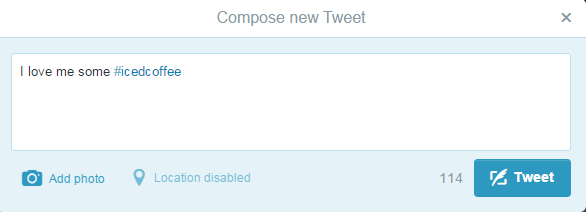
Hashtag- # – This is one of social media things that I had a hard time grasping at first. The best way I can explain it is that when you create a tweet and you add a # to the front of a word, name or phrase, Twitter then adds your Tweet to a stream of other Tweets using the same hastag. In my Tweet example above, if I clicked on #icedcoffee, I would see all the other people talking about #icedcoffee on Twitter. This is really cool if you are running a promotion and you want people to talk about your brand or product like #milk.
Sharing Links- Most bloggers want to get their posts or podcasts out there on social media in hopes that it spreads. By pasting a link in your tweet you can drive traffic to your site. Links however take up a lot of character real estate so you’ll most likely want to shorten them.
How To Add a Shortened Link- If you are wanting to share a post from your blog or website your URL pasted into the Tweet Composer can take up tons of characters. Many people use a free site called Bitly to simply paste their URL in the shortener box and it instantly generates a shortened version of your URL for sharing. Now you can share your link and say something about it within your 140 character limit.
Retweet- When you like something someone Tweeted (or wrote about) you can push the Retweet button and share it on your own profile. I use this most often for really good quotes.
So, Should You Be Using Twitter With Your Blog or Online Business?
Well, are your customers or audience using Twitter?
If yes, then you should be Tweeting on a regular, consistent basis with information and content that relevant to your audience.
If no, you may still want to set up and use an account. If you are a blogger who wants to make money from your blog through sponsored posts, brands often look at all your social media follower numbers in making their choices. In fact, most include social sharing on all the major social outlets as part of your paid post contract agreement.
In the case of my frugal lifestyle blog, I haven’t found much audience interaction on Twitter. So I took the Twitter icon link off the top of my webpage.
Why not leave it? Because it’s just one more thing that can take someone away from my blog.
In the case of my professional blogger side, all my friends and colleagues are using it. So I end up using @ThriftyLilMom and @ KimAndersonC for keeping in touch with the readers that are on there as well as friends, mentors and professionals that I want to learn from.
How Do I know If My Audience Is on Twitter?
Set up Google Analytics- Google Analytics can help you see what social media outlets are sending traffic your way. With my frugal lifestyle blog, most of my social traffic is Pinterest and Facebook. So instead of spreading myself thin between every social media channel out there, I stick with the ones I know my audience are using.
Look At Engagement- As anyone talking to you or about you on Twitter?
Ask Your Readers- You could send an email out with simple reader survey asking them what social media outlets they use most. If you don’t have much of a following yet, it’s okay. Just experiment, be patient and see what happens. Soon enough you’ll know where your time is best spent.
I hope this article has helped a few people out there who consider themselves to be social media challenged. I’m not an expert by any means, but this is what I’ve learned along the way!
Do you use Twitter with your blog or business? Why or why not?

